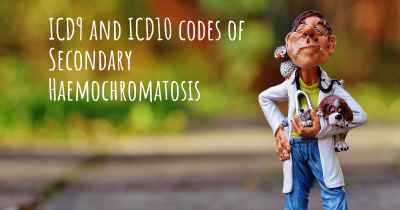Can people with Secondary Haemochromatosis work? What kind of work can they perform?
See how people with experience in Secondary Haemochromatosis give their opinion about whether people with Secondary Haemochromatosis can work and what kind of jobs are more appropriated for people with Secondary Haemochromatosis

Secondary Haemochromatosis is a condition characterized by excessive iron accumulation in the body due to another underlying medical condition or external factors such as multiple blood transfusions. This condition can have a significant impact on an individual's health and daily life. However, whether a person with Secondary Haemochromatosis can work or not depends on the severity of their symptoms, the progression of the disease, and the specific job requirements.
It is important to note that each case of Secondary Haemochromatosis is unique, and the ability to work will vary from person to person. Some individuals may experience mild symptoms and be able to continue working without major limitations, while others may face more severe symptoms that can affect their ability to perform certain tasks or maintain regular employment.
For individuals with mild to moderate symptoms of Secondary Haemochromatosis, various types of work can be pursued depending on their overall health and physical capabilities. Jobs that do not require heavy physical exertion or prolonged standing may be more suitable. Office-based roles, administrative work, customer service, or jobs in the creative field can be considered. These types of jobs typically involve less physical strain and allow for more flexibility in managing symptoms.
Flexibility in work hours and the ability to take breaks when needed can be crucial for individuals with Secondary Haemochromatosis. This allows them to manage their symptoms, attend medical appointments, and engage in necessary treatments. Employers who are understanding and accommodating towards their employees' health conditions can greatly contribute to a positive work environment for individuals with Secondary Haemochromatosis.
For individuals with more severe symptoms or advanced stages of Secondary Haemochromatosis, the ability to work may be more challenging. Fatigue, joint pain, and organ damage can significantly impact their physical abilities and overall well-being. In such cases, it may be necessary to explore alternative work options or consider disability benefits if the condition prevents the individual from maintaining regular employment.
It is important for individuals with Secondary Haemochromatosis to work closely with their healthcare team to manage their symptoms and determine the most suitable work options. Regular monitoring of iron levels, appropriate treatment, and lifestyle modifications can help individuals with Secondary Haemochromatosis maintain their health and potentially continue working.
Employers can also play a crucial role in supporting individuals with Secondary Haemochromatosis in the workplace. This can include providing reasonable accommodations such as flexible work hours, ergonomic adjustments, or allowing for breaks when needed. Creating an inclusive and supportive work environment can greatly benefit employees with health conditions, including Secondary Haemochromatosis.
Ultimately, the ability to work with Secondary Haemochromatosis depends on the individual's specific circumstances, the severity of their symptoms, and the nature of their job. It is important for individuals to prioritize their health and well-being while also exploring suitable work options that align with their capabilities and limitations.








